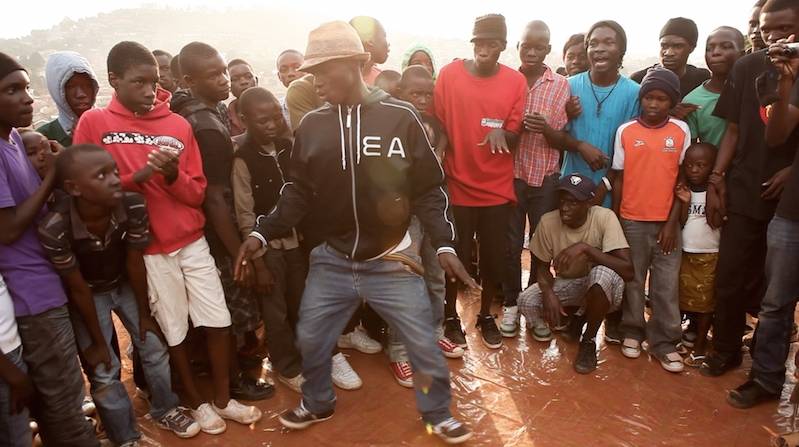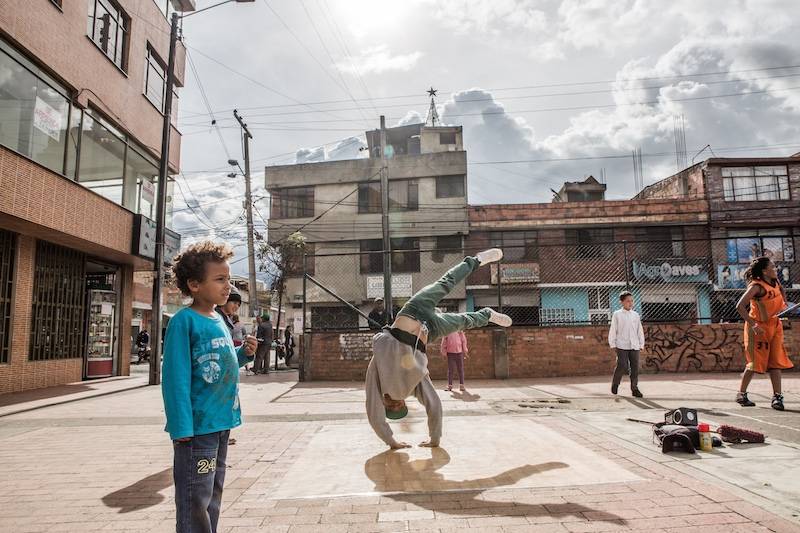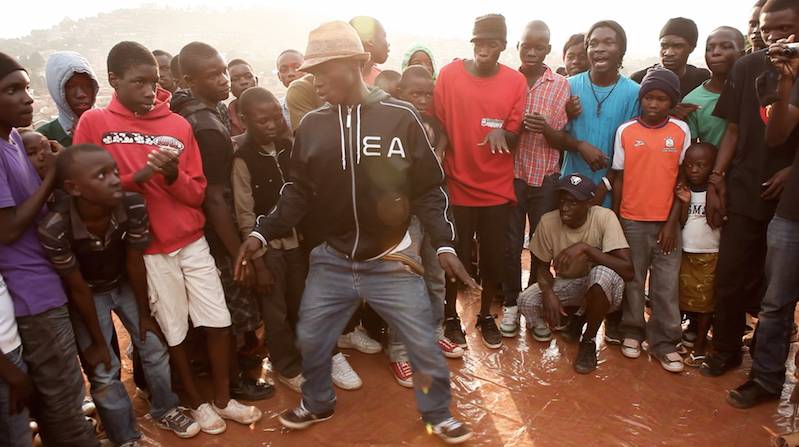
For the second year in a row, the UIUC Dance department is presenting the Flatlands Dance Film Festival. This year’s festival is offered at the Art Theater Co-op in downtown Champaign on three successive Tuesday nights, starting tomorrow (September 1st) at 7 pm. The schedule includes a documentary on breakdancing produced by Nas, and a selection of short and competition films from the US and around the world.
For a little more insight into the festival’s vision and themes, I got to speak with one of the curators, Rebecca Ferrell.
Smile Politely: You say in the festival announcement that you’d like to promote and expand the role of dance in the community. How do you see this festival accomplishing that?
Rebecca Ferrell: C-U has a big draw to film already (Ebertfest, Pens-To-Lens), and a strong dance community. Our competition film submissions are adjudicated by community members, which allows members of the larger C-U community to have a say in what’s screened. Luke Boyce from Shatterglass Studios, Laura Chiaramonte, a prominent dance artist in C-U, Mark Rhodes, board member of Art Theater Co-op and a Dance Partner, were each adjudicators for this year’s submission film competition. And the adjudicators will change each year giving different members the opportunity to be part of the selection process. The festival, which began last September, actually started out of community interest. Mark Rhodes sparked the idea of merging these two communities here to see what it could become. The festival itself gives community members an enhanced experience of the arts to which they might not normally have access, and allows them to actively be a part of the dance on camera scene.
SP: I haven’t really thought about breakdancing since the early aughts, and it’s become an 80s cliché. So I was initially surprised to see that you chose Shake the Dust (produced by rap artist Nas) as your opening film. However, the trailer makes the case for breakdancing as a meaningful, contemporary international phenomenon. Can you talk a little about your reasons for choosing this film to kick off the festival?
Ferrell: For starters, breakdancing has never not been something community based. The only reason it has gone through an ebb/flow as cliché is because it’s been watered down and commercialized by people who don’t know about its cultural and social roots. It’s a vibrant and strong dance subcategory that doesn’t get much recognition.
Abby Zbikowski (the co-curator) and I wanted to open the festival with something that was new and fresh — in this case, a fresh take on the genre of B-boying. The trailer for Shake the Dust came out in late April, and Abby and I simultaneously texted each other when we saw the buzz of the film online. [We] knew it was a great way to start what was already looking to be a successful festival season, and we’re very excited that we have the honor of being its Midwest premiere!

SP: At the time of this interview, the competition films and shorts have yet to be announced. [They have since been posted] Can you give us an idea of what direction or ethos you employed in selecting for these categories?
Ferrell: In terms of the shorts program, we were looking for a range of dance genres which were emotionally provocative and visually stimulating. We were also looking for a mix of films with high-production-value as well as films that are more “of the masses”- meaning raw, DIY, what everyday people are making. We know that greatness doesn’t always have to carry a heavy price tag, and we want to exemplify that here.
We also wanted to program things that cover the whole gamut of dynamic expressions through dance- solos and groups, witty and dark- as well as pieces that showcase the enormity of what can be accomplished through the medium of film.
SP: Most of my favorite dance movies fall into two basic categories: movies about the inherent beauty of dance (like the utterly gorgeous Pina), or movies about the intricacies of a particular culture of dance (like The Company, or Save the Last Dance). In your announcement, you talk about the intersection of the choreographic and the cinematic, which sounds a bit more like the first kind of movie, and a bit like something entirely different. What do you think dance and film have to offer each other?
Ferrell: Endless possibilities. When you watch dance on stage, each performance is non-repeatable. Meaning it will not be exactly the same each time. With dance on camera, the director/filmmaker/editors/set designers/sound designers, they all focus to capture and direct the tone of a performance. They become a part of the choreography. The cinematography and edits allow the artists to capture precisely what they are trying to convey, and allow it to live on beyond the single performance. They do this through movement — the sound score ebbs and flows, the dancers move in and out of the frame, the camera capturing angles an audience may not normally see, settings that are otherwise inaccessible to most viewers are used — the cinematographers and editors become a necessary part of the dance. It expands what film lovers and dance lovers think of both genres. There’s no hierarchy. Each one has an inherently broad scope, but when they come together it becomes a pas de deux that each one individually could not possibly accomplish.
The problem I have with the normal conversation about “dance on camera” are references to things like “Dirty Dancing”. Yes, there’s dancing in the film but the dance and the film are not one and the same. Those films aren’t about the dance, they’re about a dancer; those dances aren’t a means of expressing, they’re a plot device, they’re secondary. That isn’t to say that those films aren’t important, but they’re not what I would call “dance on camera films”. I define a dance film as the fusion of using the body to express and the camera as a means to fine-tune it, enhance it, and allow it to live on immortally.

SP: Should someone who doesn’t know much about dance go to this festival? Which screenings would you recommend to them?
Ferrell: All of them! Each night brings a different perspective, a different experience. No two nights will be the same.
September 1st: Shake the Dust is a dance documentary, and a feature length film. We hope it will provide significant insight into a dance genre that is all-too-often overlooked or misjudged. We believe it will shed some new light onto B-boying, and create new audience members for this dance style.
September 8th: Our short films program includes 13 films, each under 15 minutes. Abby and myself have handpicked these films. Many have them have been making the rounds on the dance on camera circuit. They range from the avant-garde to the DIY.
September 15th: The competition films program includes seven weeks of submissions from thirteen countries. A committee of members elected 13 of the 73 films that will be screened that night. These films were specifically chosen to be relevant and accessible to people who do NOT have a background in dance. This screening includes both established and emerging dance filmmakers.
There is something for everyone throughout the festival!
———
Festival dates are September 1st, 8th, and 15th. Festival passes are $40 for general admission or $25 for students. Single screening tickets are $15 for general admission or $10 for students. Each screening begins at 7 p.m.








